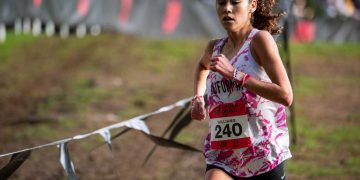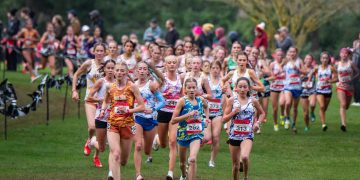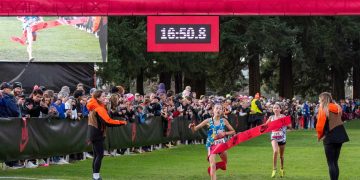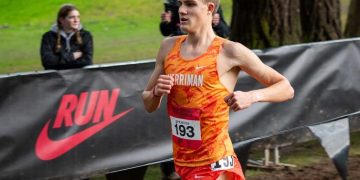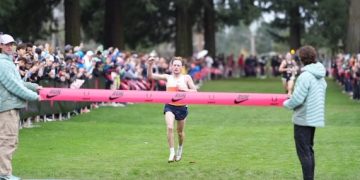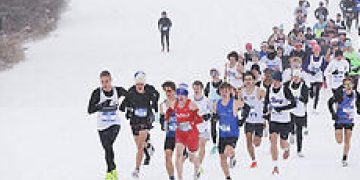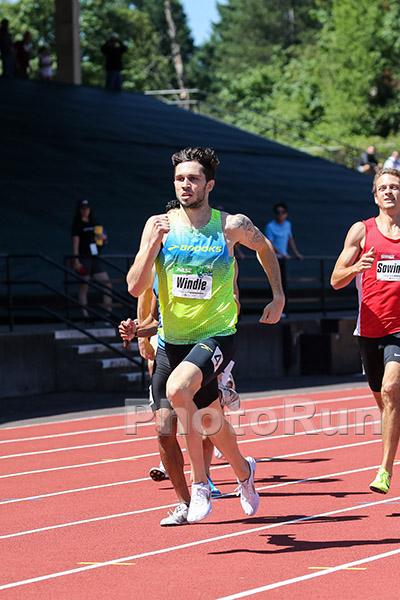 Drew Windle winning 800m at Portland Tracktown Summer Series, photo by PhotoRun.net
Drew Windle winning 800m at Portland Tracktown Summer Series, photo by PhotoRun.net
Drew Windle has been on our radar scope for the past eighteen months or so. His runs last year were eye opening. But, his run to the finish in Sacramento was epic. That last 100 meters was where the race was, and Drew Windle was there! The last month, Drew has run some fine 800 meter races since Sacramento. Drew is one day past his 25th birthday and two days past a fine 800 meter run in Monaco, where he was right behind Pierre Ambroise Bosse, and in front of Amel Tuka.
Here is a fine piece on Drew Windle by David Hunter. David wrote this a couple of weeks ago, and I am just catching up on this fine story. We expect big things of Drew in London, and my guess is, so does he.
July 4th, 2017
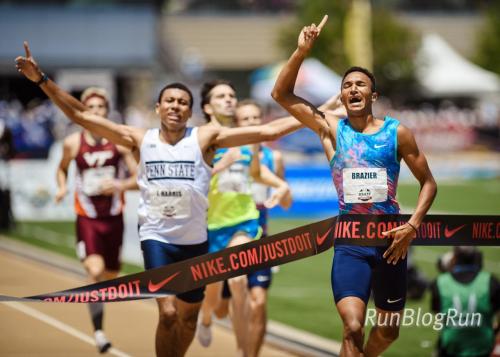 Donovan Brazier wins, Isaiah Harris second and Drew Windle has third! photo by Brian Eder/RunBlogRun
Donovan Brazier wins, Isaiah Harris second and Drew Windle has third! photo by Brian Eder/RunBlogRun
Last month in Sacramento, the sunbaked fans in Hornet Stadium raised eyebrows as they witnessed a relative unknown – a former Div. II champion in a florescent yellow singlet – uncork 3 consecutive furious finishes in the 3-race 800 meter war of attrition to gain a spot on the U.S. world championship team. For Drew Windle it was the fulfillment of a dream concocted nearly a decade ago. “My senior year in high school I set a goal that you set even though it is super far-fetched at the time,” notes the Brooks athlete as he reflects on that promise he made to himself to make a national team. “We kept working at it. I went to a Division II school [Ohio’s Ashland University] and did really well there – enough to get me a contract with Brooks in Seattle, Washington. The stars kind of aligned on the right day. And it happened. It was kind of a dream come true.”
Windle came to track & field in a curious way. Growing up outside of Columbus in New Albany, Ohio, Windle first fell in love with football – and he saw track & field only as a vehicle to secure more gridiron playing time. “In my freshman year of high school, the football coach was my track and field coach and I thought I would do track to maybe kind of suck up to the football coach so I could get some extra playing time later in my high school career. In track I ran the 100 and the 200,” reveals Windle, whose calculating plans ultimately were scuttled. “My sophomore year, we got a new coach – my middle school history teacher – and he turned me into an 800m runner. And I was pretty average until my senior year.” But in the final weeks in high school, Windle experienced a breakthrough. “I ended up running 1:51 and won the Division I state meet my senior year of high school. It all happened in the last 3 weeks – in the District, the Regional, and then the State meet. I just turned it on at the right time.”
Windle’s Clayton Murphy-like progression – 1:57 to 1:51 in a matter of weeks – opened new doors for the young athlete. But it was an easy decision for Windle to honor his earlier pledge to Ashland University and Head Coach Jud Logan. “I was committed there. And then I had this big PR and I kind of sat down with my parents. I had already made some friends with future teammates at Ashland. I just thought it was just the best fit for me – not just for the track program but also academically and socially – to go to Ashland. So I decided not to listen to any other offers from any other colleges and I was just going to stick it out at Ashland.”
At Ashland, Windle did more than just “stick it out” – he flourished. From the start, Windle was the dominant middle distance athlete in the – wait for it – Great Lakes Intercollegiate Athletic Conference, ultimately winning 16 individual or relay league crowns . “I won every single GLIAC 800 meter title except for outdoors my junior year,” notes the former Ashland star, as he thinks back on his sole 800 meter championship loss. “I was doubling back from the 15. It was my first attempt at the double and the GLIAC had some good 800m guys – some 6 or 7 guys who had run under 1:50.”
Windle vividly recalls one special instance in his decorated college career: it was a moment when he knew that a post-collegiate career in track & field was achievable. “My junior season indoors, we went to the CVSU [Grand Valley State University] Big Meet. Going into the meet, my coach and I were just hoping to get a qualifier for nationals – just trying to break 1:50. I ended up negatively splitting a 1:46.52, a time that proved to be my college PR. We kind of knew when I crossed the line and saw the time. I had a really good feeling that would be good enough to get me a contract as along as I did well the rest of that year and my senior year.”
That race proved to be a defining moment for the young athlete. His indoor PR clocking showed him the dream he had shared with his mother the prior year could become a reality. “So when the Beasts were created several years ago, all these FloTrack videos about them came out,” recalls Windle as he remembers that pivotal interchange with his mother. “During winter break during my sophomore year in college, I remember watching a Beasts video sitting next to my mom. And I remember telling her, ‘Mom, if I ever get good enough, this is where I want to end up.'” Beast team member Cas Loxsom brought Windle’s progression to the attention of Brooks coach Danny Mackey. “Danny reached out and I guess he kind of liked what he saw,” explains Windle. “So then it was all a matter of just getting the documents and making sure I fit with the team well from the Brooks side of things. It was just incredible.”
A post shared by Drew Windle (@drewwindle) on
Windle – now settled in Seattle and fully immersed in the Brooks Beasts team concept – acknowledges the benefits and risks of his present running style. “Professionally, I am going out the same pace as I was in college. Going out in 52 seconds puts you in the front of a Division II 800 meter race – and dead last in a professional race. My style has changed, but my pacing hasn’t really changed a whole lot,” explains the 3-time NCAA Div. II national champion as he looks back on his 3 rounds in Sacramento. “I always try to mix some things in the first round. All three rounds I was in the back and kind of waiting to try to get up into the front. I guess my mindset when there are rounds involved is to do the bare minimum, to try and save energy to use in the next round. I never was necessarily trying to win any of the earlier rounds, just trying to be in position to advance as easily as possible to the next round.”
Windle saw special opportunity in the USATF 800m final in the wake of the Clayton Murphy misfortune. “In that final, as soon as Clayton scratched – which we heard 5 minutes before they walked us out onto the track – I knew a lot of people in their heads were thinking, ‘That’s one spot on the team that was locked up that now is wide open.’ And I knew if people were thinking that, I knew people were going to make mistakes. For example, I don’t know if Erik Sowinski takes the lead during that race if Clayton is in it; he’d probably want to save something. Other people were making these really strong moves 300 meters, 400 meters into the race. I knew just to stay in the back and stay out of trouble.” Employing a Wottle-esque racing tactic, Windle was dead last when he started to roll with 200 meters remaining. “My goal is just to be the last person to shoot his shot. That’s what I did.” When he reached the top of the homestretch, there were still 5 competitors in front of him. “I just stayed in contact enough to be able to pick people off in the last 100 meters. It’s kind of a blood bath that last 100 meters. Me, Isaiah [Harris – the runner-up in 1:44.53]] and Donavan [Brazier – the winner in 1:44.14] – we were closing really hard and everybody else was sort of going backwards.” Windle tore down the homestretch – passing three, including a struggling Sowinski in the final 15 meters – to finish 3rd in a personal best of 1:44.95 and grab the final spot on the London-bound USA world championship team. “So it worked out perfectly,” adds Windle, whose 52.59 final 400 was the fastest of the field. While other big kickers know that if you live by the sword, you die by the sword, Windle’s “Last Shot” strategy has yet to fail him in this season’s big contests. Even post-USATF Nationals, Windle has been able to pull the trigger over the final 200 meters to get up for the win as evidenced by his come-from-behind 800 meter triumphs in the final 2 Track Town Summer Series meets where his 1:44.63 clocking in New York was yet another personal best, moving him up to #10 on the world list. Windle heads to London with a string of recent successes that suggest he may well advance deep into the 800 meter rounds.
Windle has thought about and knows the strong points and weak points of his 800 meter race. “My strength is obviously my last 130 meters. I think in a race that goes out in 1:18 for 600m, I like my odds in that sort of race. I can close just as hard as anyone off of that sort of pace,” states Windle. “And I think my weakness is any race that goes out harder than 1:18,” he adds with a chuckle. “As Nick [Symmonds] says, you have to be up near the front if you want a shot to win. I was just trying to make the team this year. I thought I had a shot to win a specific sort of race – and it wasn’t that sort of race.” Windle sees racing style as an ongoing evolutionary process. “Nick ran from the back for many years. There will be a time and place to change a style, to break through a threshold, to achieve a higher honor in a higher level of competition. I realize, too, I can’t continue running from the back always and expecting to get better results. Something I have to work on, I guess, is especially that first 200. I like to settle into a rhythm early into the race – I’m just a rhythmic runner. Everybody is still pushing at that point, trying to fight for position. I think that [race style evolution] will come naturally as long as I can put consistent years of training together.”
The 24-year-old Windle is candid about his early idolization of recently-retired American middle distance legend Nick Symmonds and how the world championship silver medalist has influenced his approach to training and racing. “When I first started getting into running, Nick was in his prime. So naturally I just sort of gravitated toward him. My style of racing is straight from the Nick Symmonds playbook. He’s definitely been a big influence,” admits Windle unabashedly. “As a training partner, Nick is not a huge vocal leader on the team. But if you just pay attention to what he’s doing, you can learn a lot from him. In his entire career Nick has been one of the best at knowing exactly how much to give in a given session depending upon what time of year it is. If you watch closely enough, you can pick up on things from him. He’s just been a great leader by example, for sure.” Windle also savors the progression of his relationship with Symmonds – especially the opportunity to finally race with him. “It’s been really cool to go from being a fan boy in high school, to being a teammate, and to finally getting one race with him – which happened to be his last.”
Drew Windle has given thought on how best to prepare for next month’s World Championships. “I have a coach who worries about all the physiological prep. He knows what to do as far getting me prepped physically for it,” explains Windle who is ready for the rough and tumble of international middle distance championship racing. “My plan is to go back to my high school football days. I’m 6’3″ and 165 pounds so I have a bigger frame that most people. So I am going to be mentally ready to use that frame and use my size and my background and not get bullied around out there.” Windle also knows proper mental preparation is a crucial element for championship success. “Mentally, it’s just staying in a good head space and being confident when I get there. I’m an American 800m runner which means if I can make the team I have as good a shot as anybody to get a medal. I’m not going to say that my goal is to get a medal. But my goal is definitely to make the final at worlds, because if you make the final at any sort of championship, you’ve got a shot to place top three.” Especially if you take the last shot.
Author
-
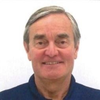
Dave Hunter is an award-winning journalist who is a U.S. Correspondent for Track & Field News. He also writes a weekly column and serves as Senior Writer for www.RunBlogRun.com, and covers championship track & field competition domestically and in such global capitals as Moscow, Birmingham, Zurich, Brussels, Beijing, Rio de Janeiro, Zagreb, Ostrava, and Doha. Hunter frequently serves as the arena or stadium announcer for championship track & field gatherings, including the Ivy League, the Big East, the Mid-American Conference, the NAIA, the Big Ten, and the Millrose Games. Hunter has undertaken foreign and domestic broadcast assignments. He ran his marathon P.R. 2:31:40 on the Boston Marathon course back in the Paleozoic Era. To find out more about Dave, visit his website: www.trackandfieldhunter.com He can be reached at: [email protected]
View all posts


